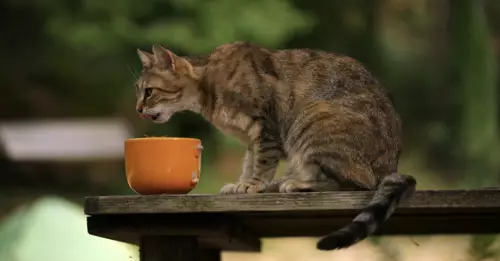Providing the right care for our feline companions involves more than just focusing on the quality of food we offer; the feeding schedule we adopt plays a crucial role in our cats’ health. While cats may not require the strict feeding timelines that dogs thrive on, a thoughtful approach to their feeding routines can greatly contribute to their overall well-being. In this article, we will explore the various feeding strategies for cats and how to cater to their unique dietary requirements as they age and as their lifestyles change.
The Importance of Feeding Schedules
Cats embody a blend of independence and instinct, traits that stem from their ancestral roots as hunters. Unlike dogs, who often thrive in social pack environments, cats are solitary hunters. In the wild, cats partake in numerous small meals scattered throughout the day, each meal fulfilling a tiny fraction of their daily nutritional needs. This behavior also informs their instinctual relationship with food, leading many cat owners to wonder about the most effective approach to feeding.
While some cat owners lean toward free feeding—leaving food out for their pets at all times—others opt for scheduled meal times. Each method has its proponents, and it’s essential to find the right balance tailored to your cat’s specific needs. Factors such as age, health status, and activity level all impact a cat’s caloric and nutritional intake, making it crucial for pet owners to remain attentive to these variables.
As cats grow, their dietary requirements undergo significant changes. Kittens, for example, demand more calories relative to their body weight than adult cats. To accommodate this growth phase, providing multiple small meals throughout the day can be beneficial. As cats transition into adulthood at around one year, they have more adaptability regarding meal frequency but still require consistent proper nutrition.
Once cats enter their senior years—typically around age seven—they often benefit from a more regular feeding schedule. Older cats may not just experience changes in their caloric needs, but they can also develop health issues that require more careful monitoring of their diets. It’s paramount for cat owners to adapt their feeding strategies as their pets age while ensuring that any sudden changes in appetite or eating habits are reported to a veterinarian, as they may indicate underlying health problems such as diabetes or hyperthyroidism.
A pressing concern that many cat owners face is obesity, which has become alarmingly prevalent among felines in the United States. With overweight cats outnumbering those at a healthy weight, it’s critical to stay vigilant about feeding practices. Even if a cat’s begging behavior appears endearing, pet owners need to resist the urge to indulge them in excess treats or portions.
Establishing a structured feeding routine can significantly aid in weight management. Research suggests that scheduled feeding not only helps maintain a healthy weight among cats but can also improve their overall health outcomes. To effectively keep their feline friend’s weight in check, owners should measure out portions accordingly and factor in any treats provided throughout the day, as these can quickly skew caloric calculations.
Choosing the Right Type of Food
The type of food we select for our cats can also influence their feeding schedule. Wet or raw diets carry a higher moisture content, catering to a cat’s natural instinct to consume food that provides hydration. However, given their shorter shelf life, these foods are less suited for free feeding options. Maintaining optimal freshness for wet food means timely servings and proper storage in the refrigerator, a practice that many owners may overlook.
In contrast, dry food often becomes less desirable for some cats, but it can also prevent overeating due to its stiffness and texture. Ultimately, the best choice depends on individual cat preferences and the needs of their owners. Careful consideration of dietary options plays a pivotal role in shaping effective feeding routines.
In households with multiple caregivers or cats, ensuring that each feline receives the appropriate amount of food can be challenging. It’s essential to keep clear communication among family members regarding feeding protocols to avoid inadvertently overfeeding. Similarly, maintaining awareness of each cat’s dietary habits in a multi-pet environment requires consistency and monitoring.
Furthermore, for pet owners constrained by busy schedules, adapting feeding times to align with household routines can provide a feasible solution. If mornings are hectic, transitioning to evening feedings might be a more successful option while still meeting the cat’s nutritional needs.
Consulting with Professionals
Ultimately, the key to achieving a successful feeding schedule lies in knowing your cat and how its needs change over time. If you’re unsure about how to adapt your cat’s diet or you’re contemplating a change in feeding routines, consulting with a veterinarian is always advisable. Their expertise can ensure that your cat remains healthy and happy, regardless of whether you select a specific feeding method or a combination of styles.
By recognizing the importance of an appropriate feeding schedule and nutritional balance, we can cultivate the well-being of our feline companions tailored to their unique needs. A strategic approach to their diet promotes not only better health but also enhances the bond between pet and owner.

